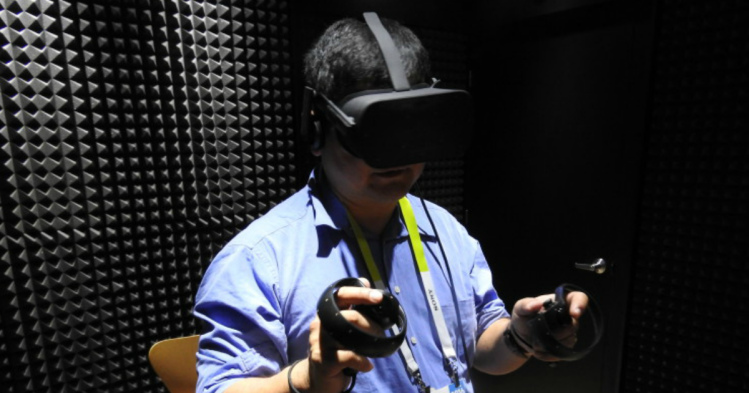Virtual reality dominated the Game Developers Conference last week, but it’s nearly time for that hype to start translating into sales. And one analyst thinks the rest of the industry is setting its expectations too high.
A lot of important companies are investing in VR, and that’s one of the reasons that tech advisor Digi-Capital predicts that it will generate $30 billion in spending by 2020. GDC 2016, which brought together game makers from around the globe, proved that both hardware companies and content creators are excited about the potential for this new platform. The Rift, which begins shipping March 28, is well positioned to take an early lead in this space, but R.W. Baird analyst Colin Sebastian doesn’t think that means it’s a guaranteed hit.
“We share some of the optimism for the industry as one of the few growing sectors of media and entertainment,” he wrote in a note to investors. “However, our near-term expectations for VR are more constrained. We expect Oculus to sell 500,000 to 1 million units this year. That’s versus consensus expectations of 1 to 2 million.”
Sebastian is making this prediction after a GDC where you couldn’t help but stumble into another panel or meeting about VR. Oculus had a huge presence, including a special media event on Sunday and Monday where we got to try out some of the launch games. But companies like Valve (which runs the Steam game-distribution service and is releasing SteamVR devices with partners like HTC) and more were also at the event talking about VR. Sebastian noted that he met with Google, Activision, and Riot, along with many others, and repeatedly heard excitement for head-mounted displays capable of putting people in simulations or creating augmented reality images. The analyst went on to say that Rift as well as HTC Vive and Sony PlayStation VR all have potential — although most consumers may adopt low-end devices first.
“If there was one dominant theme at GDC, it is the rise of virtual reality gaming concurrent with the launches of Oculus Rift, HTC/Steam Vive, and PlayStation VR this year,” he said. “We continue to view mobile VR as currently the leading VR interface for consumers, although PlayStation VR has some notable advantages among ‘platform’ devices, including lower price point, console integration, decent game lineup, and a relatively comfortable headset.”
During GDC, Sony revealed that PSVR will ship for $500 — or for $400 if you already own certain components like the camera and motion controllers. So Oculus Rift will not only face competition from the HTC Vive on PC, but it will have to deal with less expensive tech from consoles and mobile phones. But these aren’t the only reasons Sebastian is predicting Rift may top out at 500,000 units sold in its first year. He also thinks that a dearth of content after launch may slow down VR’s momentum, along with a number of other issues.
“While we expect each of the three [high-end] VR platforms will likely sell out of limited initial production and shipments, adoption among a broader consumer base will require lower prices, more attractive form factors, and improved usability,” said Sebastian. “Additionally, we note there are still some issues with motion sickness.”
But those problems and a slow start are kinda easy to forget about when you really feel like you’re really a quarterback in an NFL playoff game. And with the power of companies like Facebook and Google powering VR, it’ll likely get over the early hurdles to turn into a lucrative industry in a few years.
VentureBeat's mission is to be a digital town square for technical decision-makers to gain knowledge about transformative enterprise technology and transact. Learn More

